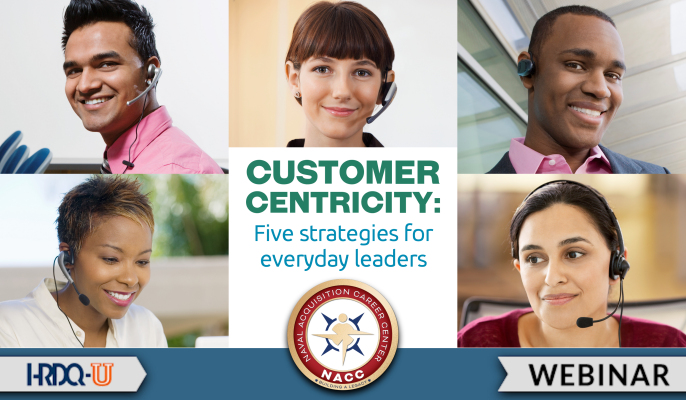- 827 Lincoln Ave. #B-10 West Chester, PA 19380
- support@hrdq.com
- +1-610-279-2002
Quick Links
Menu
Featured Topics
Menu
Total Results
We could not find what you're looking for. Please try again.No Record Found

In today’s fast-paced and changing world, the need to understand those you serve continues to shift. The impact of your organization’s success relies on how you meet these needs. Our Journey at the Naval Acquisition Career Center started by understanding that we need to focus on our people, internally and externally. Join us for our interactive webinar, where we will share insights and lessons in our Journey towards customer-centricity.


Judith Cardenas is the President and CEO of Strategies By Design, a consulting firm helping organizations across the globe to innovate and design successful solutions and experiences for their clients. She has spent the last 10+ years empowering leaders and organizations to execute their vision and reach their goals through processes focused on innovation, change, and co-creation.
Her academic background includes a doctorate in education administration, as well as a doctorate in training and performance improvement. She has completed a variety of postdoctoral training in topics such as Innovation, Design Thinking, Digital Facilitation, and AI.
Judith has created and delivered training to organizations and agencies such as the World Bank, United Nations, QVC, Inc., Phillips Semiconductor, U.S. Navy, U.S. Nuclear Regulatory Agency and U.S. Army, National Institute for Staff and Organizational Development/UT Austin and American College of Radiology.
Ms. Lauren Engle is a dedicated workforce development professional with over 13 years of managing and leading command-wide programs that support employee lifecycles in the Department of the Navy. Ms. Engle is the Deputy Director of the Navy Acquisition Career Center (NACC) located in Mechanicsburg, PA. She is responsible for providing the Department of the Navy Acquisition Enterprise with the workforce development tools and programs that enable the delivery of the products and services required by the Warfighter. In addition, as the NACC’s Acquisition Workforce Programs Division Head, she oversees the facilitation of acquisition training, education, and certification requirements for the Acquisition Workforce.
Throughout her tenure, Ms. Engle’s skill in building coalitions with multiple stakeholders led to the creation of a NACC culture initiative focused on providing meaningful connections between NACC employees and those they serve. In addition, Ms. Engle led the development of a NAVSUP Enterprise acquisition organizational structure, including a board of executive advisors for the NAVSUP Vice Commander. Her strategic initiatives led to NAVSUP’s highest compliance rates in regard to professional certification, hiring allocations, and budget execution.
With her passion for helping people and organizations thrive, Ms. Engle served as the chair of the Cultural Awareness and Diversity Committee. Ms. Engle also served on the Corporate Culture Committee and co-developed several key initiatives to ensure employees felt valued, respected, and heard. She was selected by senior leadership to share the organization’s mission and vision at the largest maritime exposition in the United States and was also selected as co-chair of the Combined Federal Campaign, the world’s largest and most successful annual workplace charity campaign to promote philanthropy.
Ms. Engle holds a master’s degree in Training and Development from The Pennsylvania State University and a bachelor’s degree in Psychology from Lebanon Valley College. Ms. Engle was honored with a Navy Meritorious Civilian Service Award for her storytelling abilities and human-centric approach to communication.
Helping foster the culture of innovation needed to stay competitive in today’s modern, ever-changing market, the Strategies By Design Group applies innovative techniques and approaches to achieve immediate engagement and growth. And enhances the connection between behavior design and human-centric design.
Learn more at www. strategiesbydesigngroup.com

“This was such a valuable presentation with many takeaways that I can immediately bring back to my team. I will definitely attend more. Thank you!”
Eric S.
Budget and Business Operations Director
Department of Corrections

“Training provided some very useful tips that I will incorporate into our program.”
Tonjia B.
CCPS
LSF

“No other words – just awesome. Again, thank you.”
Anneke K.
VISTA Leader
Waynesville R-VI School District

Sign up to be notified of upcoming live webinars, in-depth workshops, podcasts, blog posts, promotions and much more. Stay ahead of the curve and subscribe for FREE today!